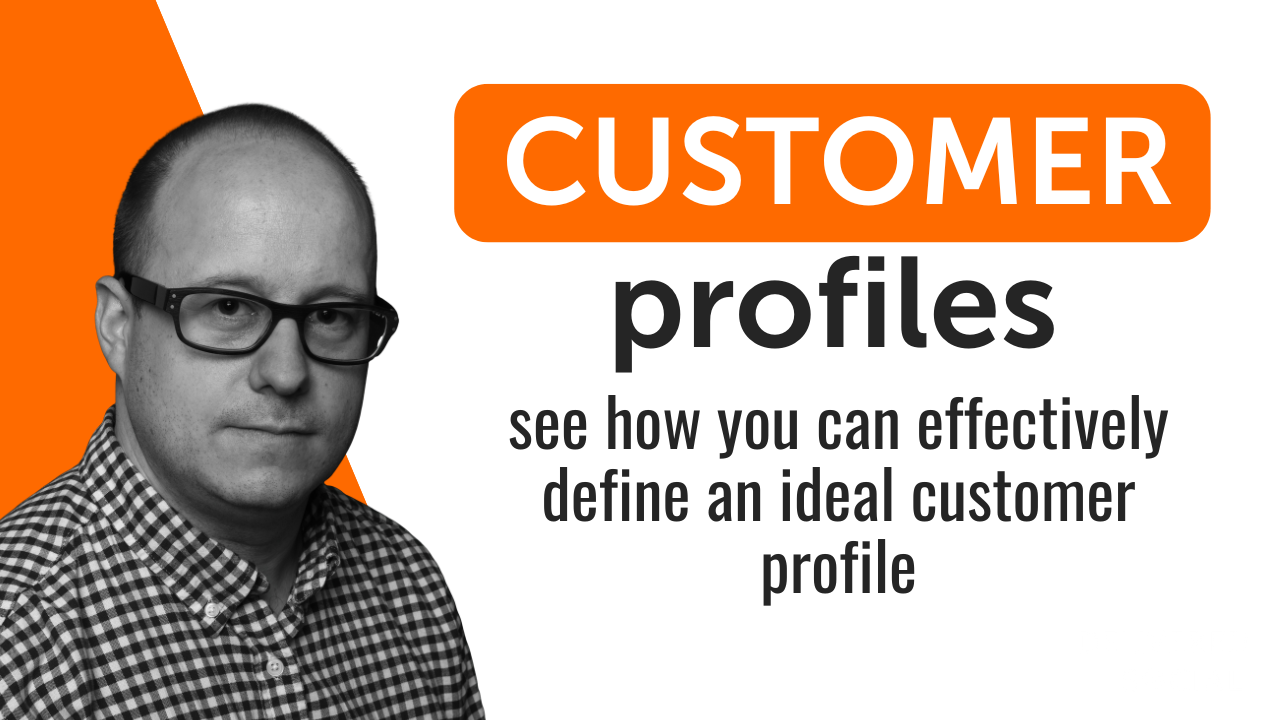
An effective marketing strategy is a targeted one. Over the past years, businesses have come to this understanding that granular targeting is the best way to increase the ROI of their marketing and sales campaigns. With a targeted campaign they also get higher engagement rates; they have less processes to manage; and they have more fun with their campaigns.
In order to have a high level of targeting, you need to have a clear understanding of your customers. In other words, you need to define your ideal customer profiles or ICPs. This allows you to reach the people who are interested in your offerings and who engage the most with your campaigns. Let's see what an ideal customer profile is and how to define it.
What Is An Ideal Customer Profile (ICP)?
An Ideal Customer Profile (ICP) is a profile or sketch of a business's most valuable customers, that is the customers who generate the most revenue and have the highest retention rates.
An ideal customer profile (ICP) is different from a buyer persona in that ICP defines an ideal customer based on firmographics (industry, size, revenue), technographics (technology stack), and behavioral attributes (buying patterns, engagement levels). This is while a buyer persona focuses on individual decision-makers within that company on a more granular level.
A well-defined ICP enables businesses to:
- Attract high-value customers with the best potential for long-term success.
- Improve conversion rates by focusing on prospects more likely to engage.
- Increase customer retention by aligning offerings with ideal customer needs.
- Streamline marketing and sales efforts for more efficient resource allocation.
Why You Should Have ICPs
Defining an ICP offers several benefits that streamline marketing, sales, and customer success strategies:
- Improved Lead Quality – Having clear ICPs improves the quality of your lead generation. And once you have a clear profile of the customers you should target, you are less likely to waste your resources on unqualified leads.
- Efficient Resource Allocation – Marketing and sales teams can prioritise high-value accounts and optimise their budgets and effort.
- Shorter Sales Cycles – When targeting well-matched prospects, sales teams can engage in more relevant conversations and close deals sooner.
Better Customer Retention – Customers that fit the ICP tend to stay longer and generate more revenue in the long run. - More customer referrals: customers that fit your ICPs also tend to promote your business and send you referrals. You can use a referral platform such as ReferralCandy to enable them to do so.
- Stronger Sales and Marketing Alignment – When both teams have a shared understanding of the ideal customer, collaboration improves, and this leads to better messaging, targeting, and conversion rates.
How To Define ICPs
Developing an ICP requires a data-driven approach that includes internal analysis, market research, competitive insights, and customer feedback. Let's discuss each of them.
1. Internal Discussions
Stakeholders, top management, and product developers have the most information about your products and who they are created for. Hold internal discussions with them and use their insights for defining your ICPs.
Second in line are the people who have the most contact with your customers. These are your sales and customer success representatives. Their insights about the real issues of your customers is a goldmine for defining your ICPs. Hold regular meetings with them. Create surveys and questionnaires and ask their opinions about the detailed aspects of your ICPs.
2- Sales and CRM Data Analysis
Use your CRM (Customer Relationship Management) data to identify top-performing accounts. Look at customers with the highest retention rates, largest contract values, and best engagement levels. These customers give you a good idea of how your ideal customer profiles should look like.
What data should you look for in your systems? Here are a few suggestions:
- Customer Acquisition Cost (CAC) – Which customer segments cost the least to acquire?
- Lifetime Value (LTV) – Which customers generate the most revenue over time?
- Churn Rate – Which customers tend to leave early, and why?
- Engagement Levels – Which customers are the most engaged with your product or service?
3. Market Research: Identifying Industry Trends and Opportunities
Use your internal insights in conjunction with external market research to define your ICPs.
Industry Trends and Market Conditions
Customer preferences change as your industry evolves and your market conditions change. It's important to keep your ICPs up-to-date by identifying these seismic changes. Identify market trends that impact your ideal customers. Be active on social media and niche communities and engage with people there. Use industry reports (such as the ones published by Forrester, Gartner, and McKinsey) to understand customer behaviour shifts.
Customer Demographics
Your ICPs should have certain demographics. You can go into detail about your ICP demographics but the most important ones are:
Industry: Which sectors need your solution the most?
Company Size: Are you targeting startups, mid-market, or enterprises?
Location: Are certain regions more profitable?
4. Competitive Analysis: Understanding the Market Landscape
One of the most important steps in defining your ICPs is doing a competitor analysis. What customers are your competitors targeting? What are their demographics and their pain points? How do they interact with your competitors online?
Identify Competitor's Customers
- Study competitor case studies, testimonials, and LinkedIn company pages to identify their target customers.
- Use tools like SEMrush, Ahrefs, and LinkedIn Sales Navigator to analyse their strategies and understand their customers.
Determine Unique Differentiation Factors
When doing competitive analysis, you should avoid copying the exact ICPs of your competitors. Surely you have some unique value propositions that differentiate you from your competitors, so it's a good idea to be inspired by your competitors rather than copy their strategy.
Identify areas where your competitors under-serve their customers, then try to position your product as an alternative solution for those customers. Highlight the unique value proposition that makes your product/service stand out, You need your ICPs to reflect your unique value proposition.
5. Customer Feedback: Learning from Existing Clients
First-party, first-hand data is always the most valuable data because you're certain of its sources and methods of gathering. Gather insights from your current customers through surveys and interviews.
Conduct interviews with your most loyal customers to understand their challenges and needs. Use Net Promoter Score (NPS) surveys to measure customer satisfaction and retention indicators, identify common objections raised during the sales process. Address negative feedback to improve future customer fit.
Before categorising feedback or running text analytics, verify that the data collected across channels is accurate and reliable. High data quality is essential for deriving actionable insights that truly reflect your customers' experiences. Quick note, always use a professional email with a custom domain for all professional interactions with your customer.
Top Questions To Answer When Defining ICPs
To ensure your ICP is actionable, answer these critical questions:
1. Internal Analysis
- Who are our most profitable customers?
- What industries and company sizes generate the highest LTV?
- What pain points do our ideal customers face?
2. Market Research
- How are industry trends affecting our ideal customers?
- What external factors influence their buying decisions?
- Are there underserved segments that align with our offerings?
3. Competitive Analysis
- Who are our competitors targeting, and how do we compare?
- Where are our competitors failing to meet customer needs?
- How can we differentiate ourselves effectively?
4. Customer Feedback
- What do our most successful customers have in common?
- What objections do potential customers raise?
- What key features or services drive the most satisfaction?
What Does An ICP Look Like?
Here's an ideal customer profile (ICP) for a company called "CloudSync Pro," which offers a secure, cloud-based data management and collaboration platform for mid-sized to large businesses.
CloudSync Pro's Ideal Customer Profile (ICP):
- Company Demographics:
- Industry:
- Primarily: Financial Services, Healthcare, Legal, and Tech (SaaS).
- Secondary: Manufacturing, Engineering, and Research.
- Company Size:
- Employee Count: 250-5,000 employees.
- Annual Revenue: $50 Million – $1 Billion.
- Location:
- North America and Western Europe, with a focus on urban centres with established tech infrastructure.
- Must have strong internet infrastructure.
- Technographics:
- Utilises cloud-based CRM and ERP systems (Salesforce, NetSuite, SAP).
- Relies on robust cybersecurity measures and compliance protocols.
- Actively uses collaboration tools like Slack or Microsoft Teams.
- Job Title/Role Demographics (Key Decision-Makers and Influencers):
- Primary:
- Chief Information Officer (CIO).
- Chief Technology Officer (CTO).
- IT Directors/Managers.
- Chief Security Officer (CSO).
- Compliance Officers.
- Secondary:
- Department Heads (Finance, Legal, HR).
- Project Managers.
- Data Analysts.
- Psychographics and Behaviours:
- Pain Points:
- Struggles with data security and compliance regulations (GDPR, HIPAA, etc.).
- Seeks to improve team collaboration and data accessibility across departments.
- Needs to streamline data management and reduce IT overhead.
- Concerned about data loss and disaster recovery.
- Goals:
- Enhance data security and compliance.
- Improve team productivity and collaboration.
- Optimise data management and storage.
- Ensure business continuity.
- Values:
- Prioritises data security and regulatory compliance.
- Values innovation and efficiency.
- Seeks reliable and scalable solutions.
- Values strong vendor relationships.
- Buying Behaviors:
- Conducts thorough research and due diligence.
- Requires detailed product demonstrations and trials.
- Involves multiple stakeholders in the decision-making process.
- Prioritises long-term partnerships and support.
Interested In Working Together?
Introducing Delivered Social. We're The Most-Rated Digital Agency In Surrey & Hampshire – We've Got To Be Doing Something Right.
Delivered Social is a digital marketing agency with one mission—to help businesses grow. We're famous in Guildford and Portsmouth for our social clinics. We believe in free advice. We build lasting relationships because our team prides itself on being helpful, which our clients appreciate.
If you are looking for a new website or an agency to manage your social media presence, we can help.
If you need something slightly different, here's a super handy list of all our services, or you can always email us.























